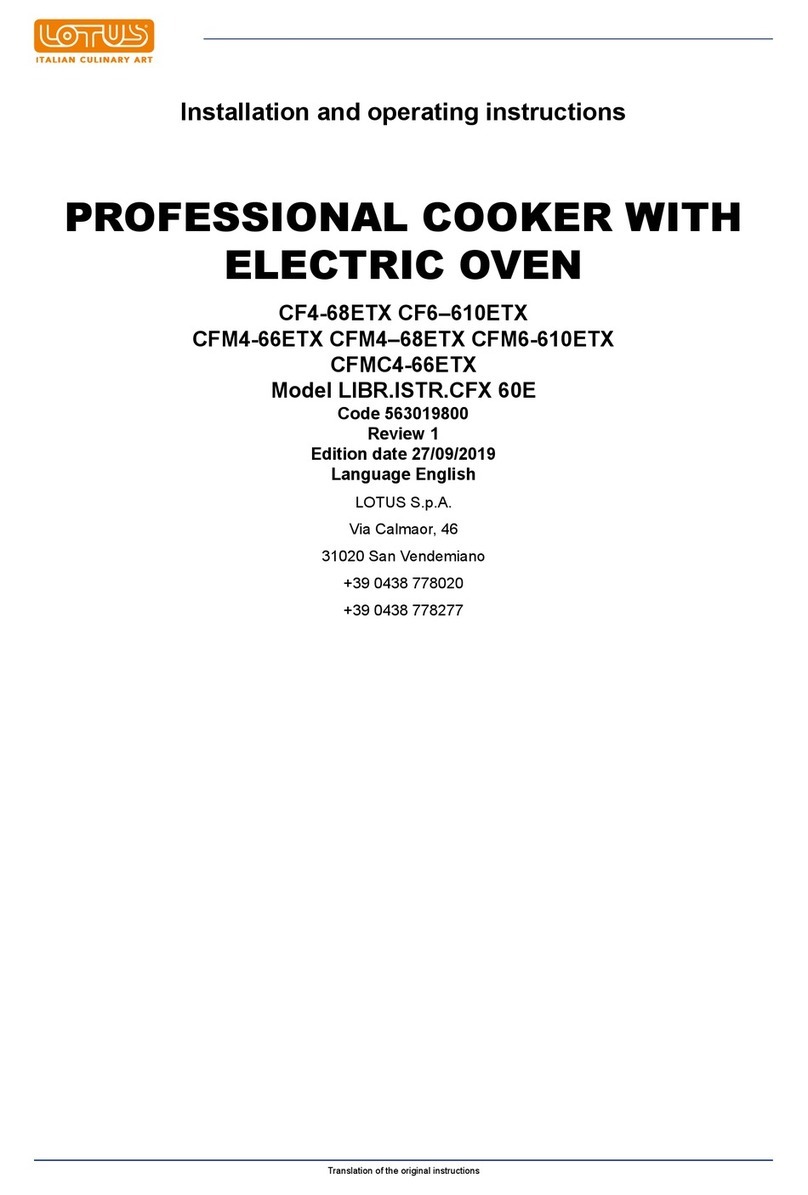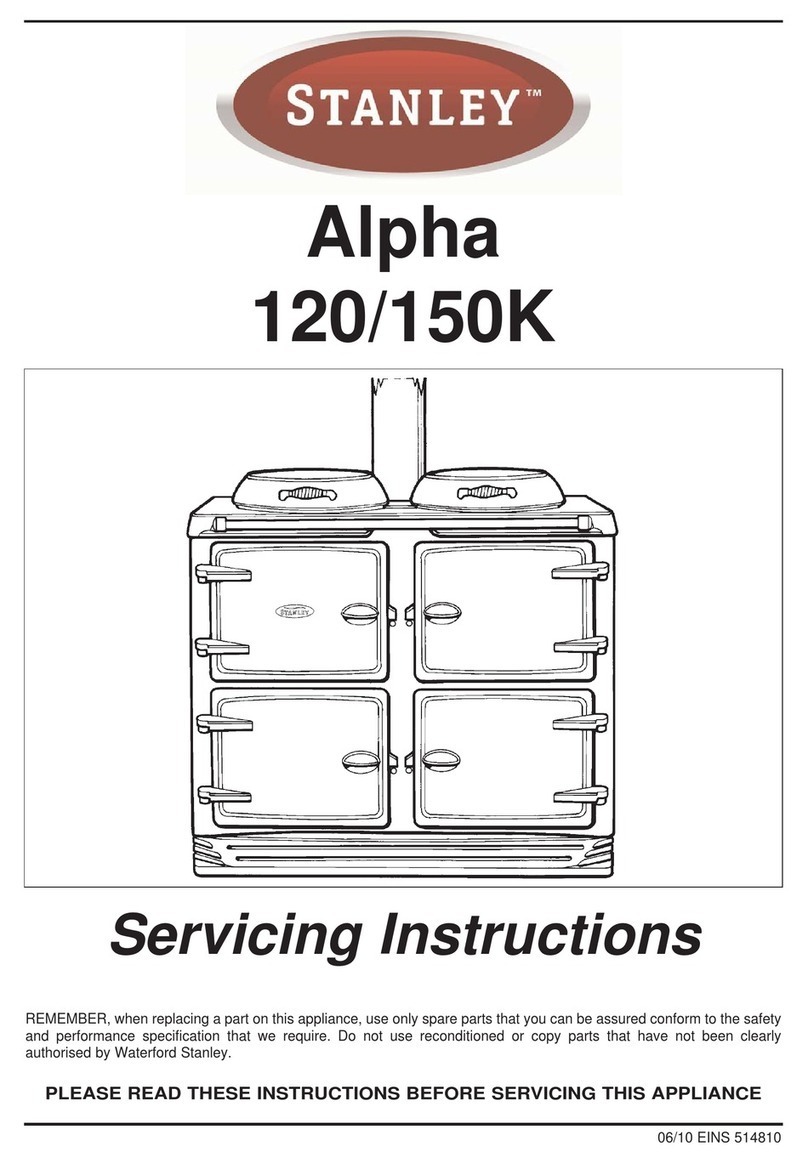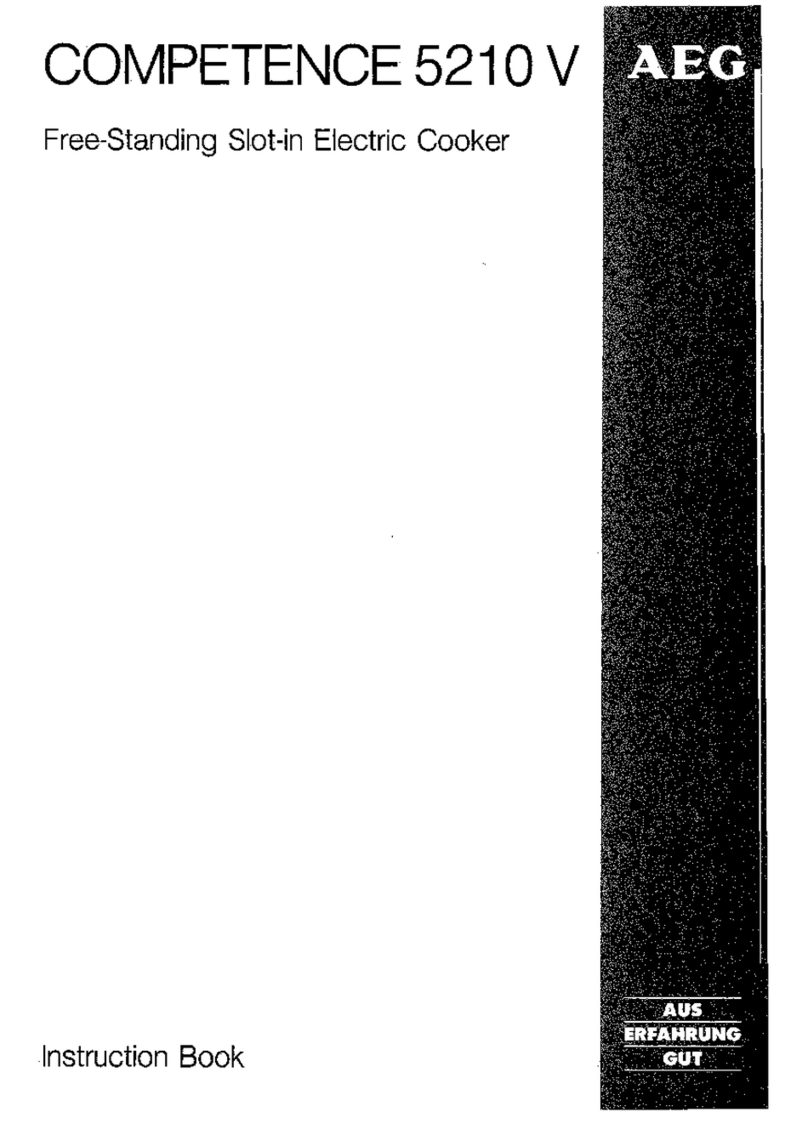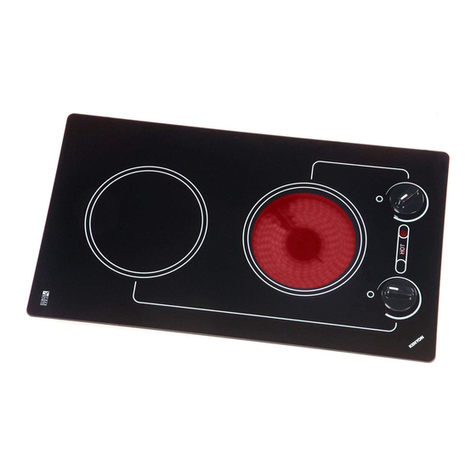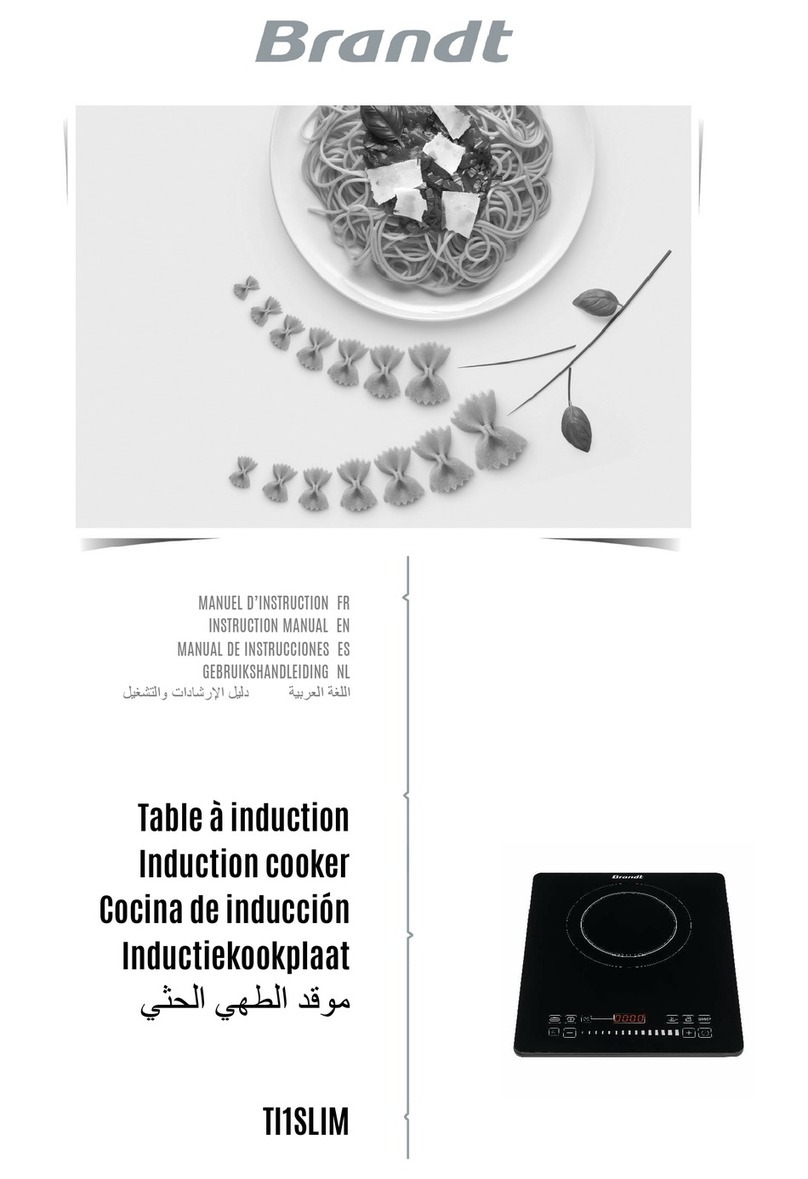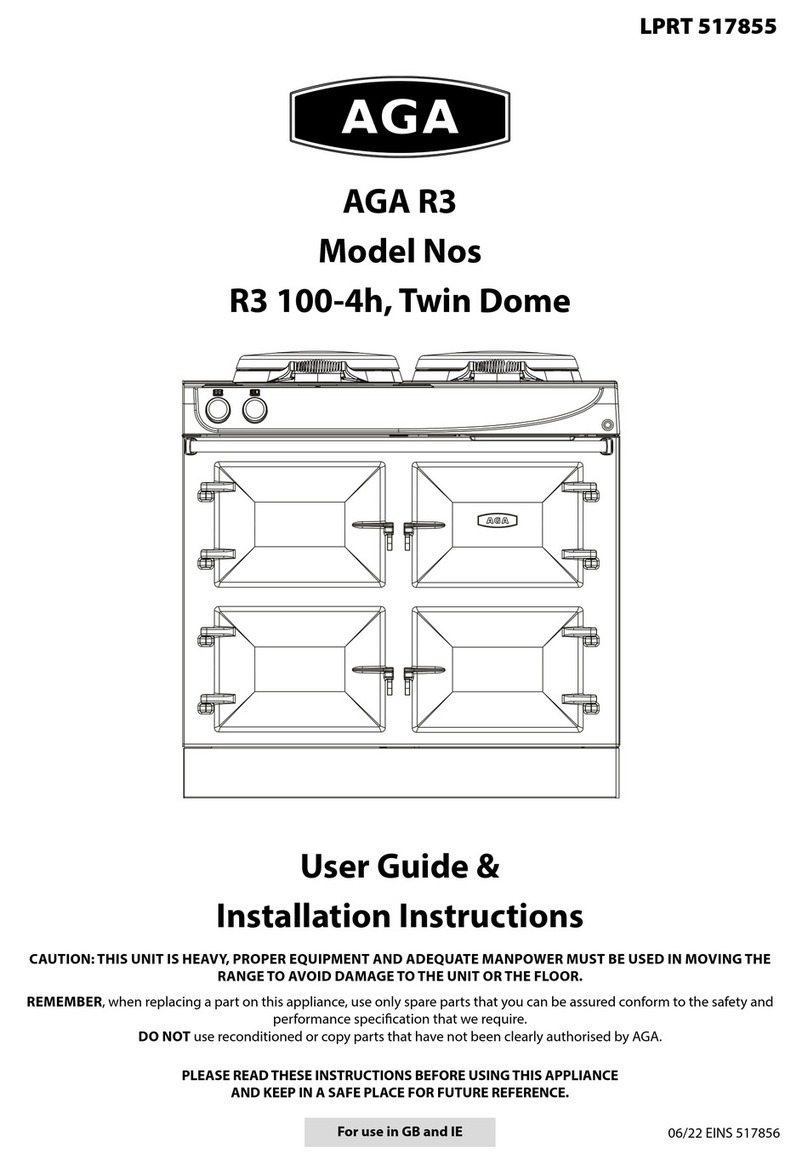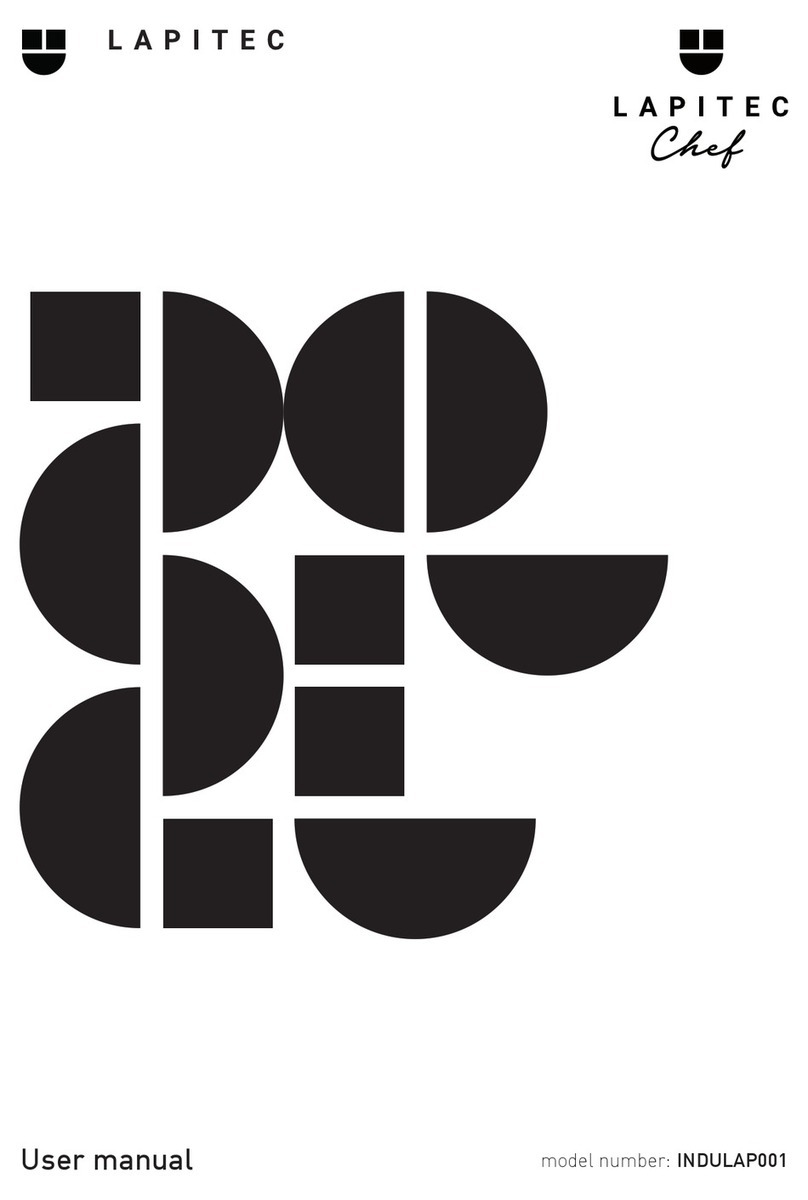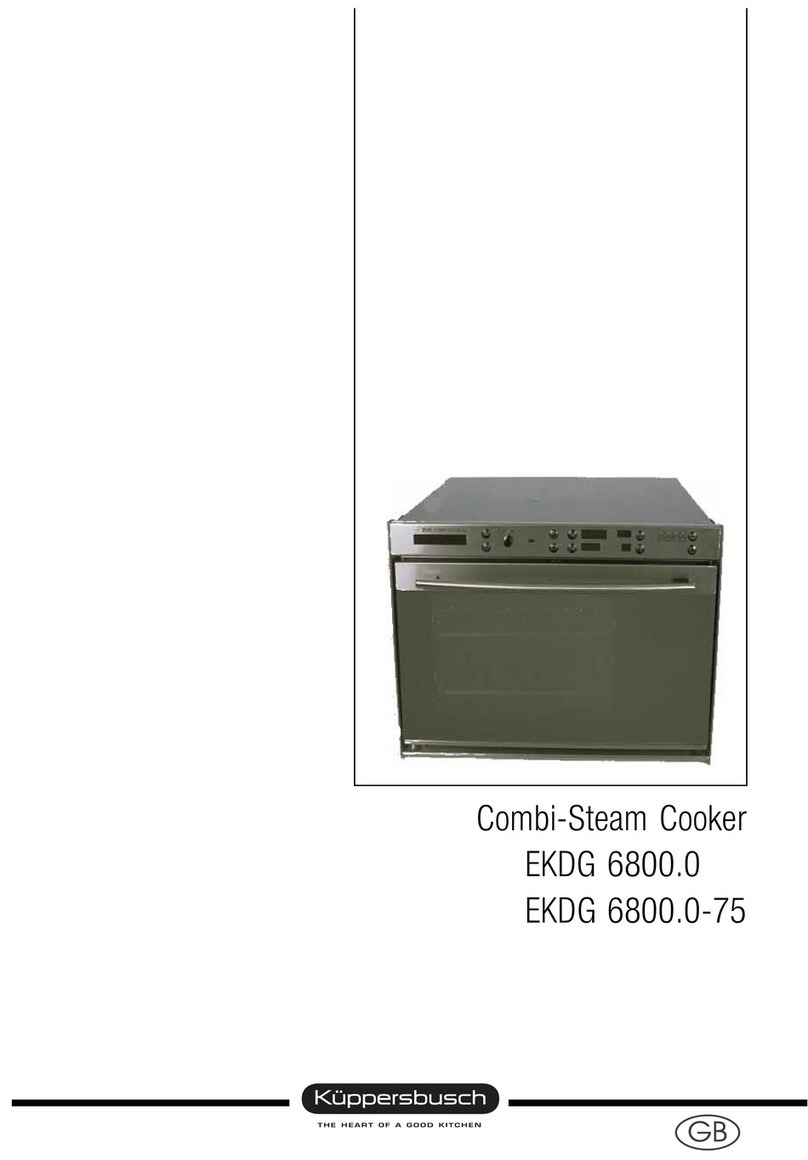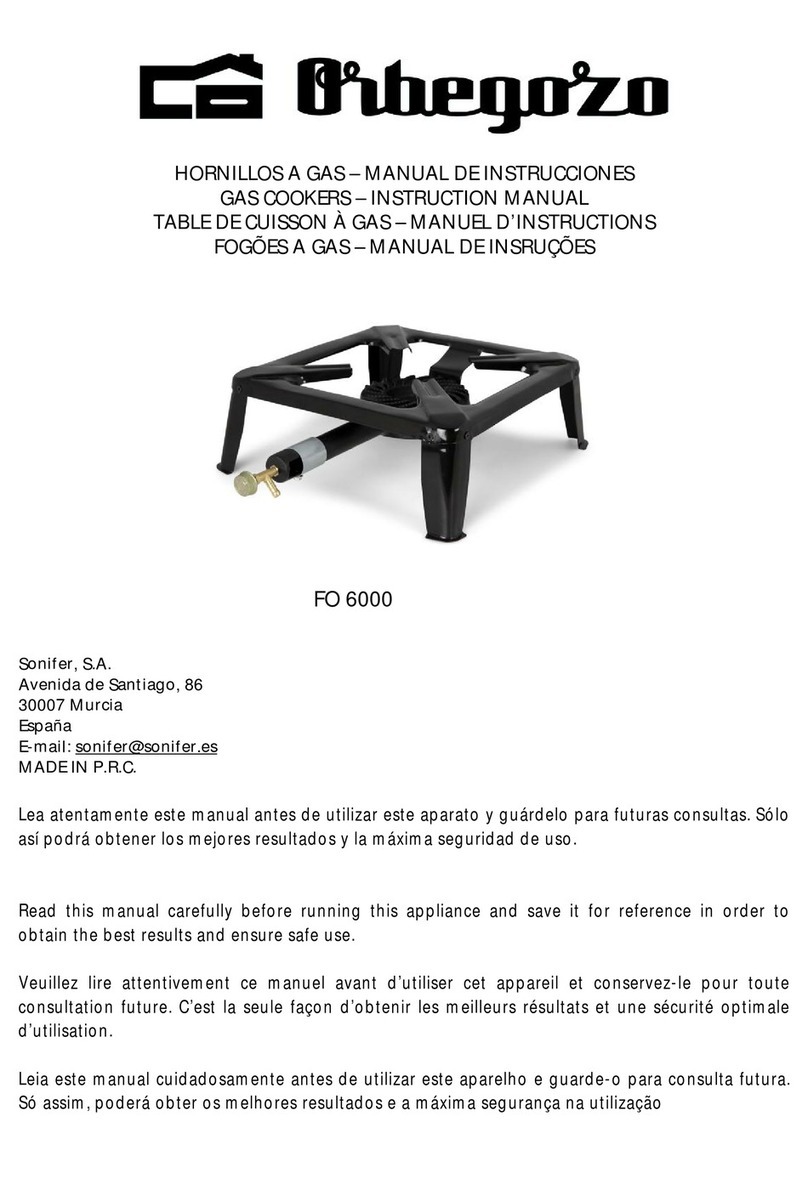Tecma NELSON S-OH1500 Operating instructions

PCC 0495–Issue 3
USER AND INSTALLATION INSTRUCTIONS
READ AND RETAIN FOR FUTURE REFERENCE
FOR USE IN
GB, BE, BG, CH, CY, CZ, DE, DK, EE, ES, FI, FR, GR, HR
HU, IE, IT, LT, LU, LV, MT, NL, NO, PT, RO, SE, SK, SI, TR
THETFORD LIMITED
Unit 6 Brookfields Way, Manvers
Rotherham S63 5DL. ENGLAND.
+ 44 (0) 844 997 1960 + 44 (0) 844 997 1961
MARINE COOKER
MODEL: NELSON
S~OH1500
FOR USE WITH LIQUIFIED PETROLEUM GAS

2
Gas Category
CAT I3+ (28-30/37) CAT I3B/P (30)
BUTANE (G30) 28-30 mbar BUTANE (G30) 30 mbar
PROPANE (G31) 37 mbar PROPANE (G31) 30 mbar

3
Fig. 1
When installing appliance using
gimbal mountings, a hose
assembly MUST be used for
connection to gas supply.
The hose assembly must
comply with local, national and
European regulations in force.
Fig. 2
A
Gimbal Locking Lever
B
Gimbal Pivot Support
C
Gimbal Pivot Plate
D
Gimballing Arc
E
¼” BSP Female
Connection
F
510mm

4
Fig. 3 Fixed Installation
Fig. 4 Gimballed Installation
A
Gimbal Locking Lever
B
Gimbal Pivot Support
D
Gimballing Arc
E
15mm Minimum
F
510mm
G
205mm for 30oswing
H
500mm Minimum
I
50mm Minimum
J
64mm Minimum
K
Support Shelf
To prevent appliance tilting when installing in fixed position the appliance
MUST be fully supported by support shelf (K) prior to locking Gimbal Lever
(A) against Gimbal Pivot Support (B).

5
OFF HIGH RATE LOW RATE
Fig. 5
Fig. 6
Fig. 7
Fig. 8

6
This appliance is designed for cooking foods, any other use is incorrect and dangerous.
Failure to install the appliance correctly or improper use, will invalidate any warranty or
liability claims.
This appliance must be installed in accordance with the local, national and European
regulations in force. Particular attention shall be given to the requirements regarding
ventilation. Read the instructions before installing or using the appliance. The appliance
MUST be installed by an approved competent person.
Our policy is one of continuous development and improvement. Specifications and
illustrations may change subsequent to publication.
Provision of ventilation
The use of a gas cooking appliance results in the production of heat, moisture and
products of combustion in the room in which it is installed. Ensure that the kitchen is well
ventilated especially when the appliance is in use: keep natural ventilation holes open or
install a mechanical ventilation device (mechanical extractor hood).
Prolonged intensive use of the appliance may call for additional ventilation, for example
opening of a window, or more effective ventilation, for example increasing the level of
mechanical ventilation where present.
The room containing the cooker should have an air supply in accordance with local and
national/European standards.
INTRODUCTION
Appliance should only be used with Liquefied Petroleum Gas (LPG)
Use only the Gas Pressures specified
This appliance is approved for use with either Propane or Butane.
We recommend using Propane for this appliance.
Butane may be used, although the appliance performance may be
compromised when the ambient temperature is below 10oC.
Butane should not be used when the ambient temperature is below
5oC.
Before using the appliance for the first time, remove any surface protection
film, i.e. plastic coating. Clean all surfaces with hot soapy water to remove
any residual protective covering of oil and rinse carefully.

7
The burners on the appliance have fixed aeration and no adjustment is required. The
burners should flame as follows:-
Propane - The flames should burn quietly with a blue/green colour with no sign
of yellow tips.
Butane - Normally on initial lighting, a small amount of yellow tipping will occur
and then slightly increases as the burner heats up.
The burners are controlled individually and each is monitored by a thermocouple probe. In
the event the burner flames are accidentally extinguished, turn off the burner control and
do not attempt to re-ignite the burner for at least one minute.
Hob burners
1. Ensure gas supply is connected and turned on.
2. Push in the control knob, turn anticlockwise to full rate –large flame ( ), see Fig 8.
3. Continue depressing the knob whilst holding a lighted match or taper to the burner.
4. After the burner is lit continue depressing the knob for approximately 10 - 15
seconds.
5. Release knob and turn to required heat setting.
6. If burner has not lit within 15 seconds, release knob and wait at least 1 minute
before repeating operations (2) to (5).
7. To turn off, rotate the control knob until the line on the knob is aligned with dot on
the control panel.
Always make sure the control knob is in the off position when you have finished using the
hotplate burners.
Using the Grill
1. Ensure gas cylinder/supply is connected and turned on.
2. Push in the control knob and turn anticlockwise to the large flame symbol ( ) –see
Fig. 8
3. Continue depressing the knob whilst holding a lighted match to the burner.
4. After the burner is lit continue depressing the knob for approximately 10 - 15
seconds before releasing the knob.
5. If burner has not lit within 15 seconds, release knob and wait at least 1 minute
before repeating operations (2) to (4).
6. To turn off, rotate the control knob until the line on the knob is aligned with dot on
the control panel.
7. Always make sure the control knob is in the off position when you have finished
grilling.
OPERATION
Avoid old or misshapen pans as these may cause instability.
Recommended pan sizes: Min Ø120mm Max Ø200mm
Using larger pans may reduce performance or cause damage
Young children should be kept away.
Accessible parts may be hot when the grill is in use. Young children should
be kept away.

8
On first use of the grill, it should be heated for about 20 minutes to eliminate any residual
factory lubricants that might impart unpleasant smells to the food being cooked. A non-
toxic smoke may occur when using for the first time, open any windows and turn on
mechanical ventilators to help remove the smoke.
Although the grill heats up quickly, it is recommended that a few minutes preheat be
allowed.
It is normal for the flames on this burner to develop yellow tips as it heats up.
Depending on the food to be cooked the correct grilling height can be achieved by
inverting the pan trivet into either the high or low position
Using the Oven
1. Ensure gas cylinder/supply is connected and turned on.
2. Open door, push in the control knob and turn to full rate (Gas Mark 9, 240°C).
3. Continue depressing the knob whilst holding a lighted match or taper to the burner.
4. After the burner is lit continue depressing the knob for approximately 10 - 15
seconds.
5. Release the knob and turn to required heat setting.
6. If the burner has not lit within 15 seconds, release knob and wait at least 1 minute
before repeating operations (2) to (5).
7. Place the oven shelf in the required position and close the door.
8. Although the oven heats up quickly a 10minute preheat is recommended. The oven
should reach full temperature in about 15-20mins.
9. To turn off, rotate the control knob until the line on the knob is aligned with dot on
the control panel.
10.Always make sure the control knob is in the off position when you have finished.
The oven shelf has been designed to allow good circulation at the rear of the oven. A
raised bar at the rear of the shelf prevents trays or dishes making contact with the back of
the oven. To remove a shelf, pull forward until it stops, raise at front and remove.
Installation of a shelf is the reverse of this procedure
Care should be taken when removing pans from the grill, i.e. use of oven
gloves, and by making use of the removable grill pan handle.
Always remove the handle when the pan is in use.
OPERATION
Ignition must be carried out with the door open.
The pans and trays supplied with this appliance are the maximum sizes
recommended for use. Larger pans and trays may restrict good
circulation of heat, increasing cooking times.
Always ensure food is properly cooked prior to serving.

9
Temperature Control
The temperature in the oven is controlled by a thermostatic gas tap and is variable over
the range 130°C to 240°C. The table below provides a guide to the approximate
temperatures at each of the shelf positions with respect to the gas mark setting.
Good use can be made of the temperature variation between the shelf positions if several
dishes requiring different temperatures are cooked at the same time. In this way maximum
benefit can be obtained from the gas used to heat the oven.
Care should be taken not to overload the oven, allow adequate spacing to ensure free
circulation of heat. When roasting with aluminium foil ensure the foil does not impair
circulation of heat or block any oven flue outlet.
Oven Temperature zones
Gas
Mark
Dish
¼ - ½
90°C
110°C
130°C
Very cool
Meringues
1
110°C
130°C
150°C
Cool
Stewed fruit
2
120°C
140°C
160°C
Cool
Rich fruit cake, rice pudding
3
130°C
150°C
170°C
Warm
Baked custard, shortbread fingers
4
140°C
160°C
185°C
Moderate
Victoria sponge
5
155°C
180°C
200°C
Fairly hot
Whisked sponges, ginger nuts
6
170°C
190°C
215°C
Hot
Short crust pastry
7
185°C
210°C
230°C
Hot
Bread, scones, flaky pastry
8
200°C
220°C
245°C
Very hot
Puff pastry
9
215°C
240°C
260°C
Very hot
Quick browning
Leaks
If a smell of gas becomes apparent, the supply should be turned off at the cylinder
IMMEDIATELY. Extinguish naked lights including cigarettes and pipes. Do not operate
electrical switches. Open all doors and windows to disperse any gas escape.
Butane/Propane gas is heavier than air; any gas escaping will therefore collect at low
level. The strong unpleasant smell of gas will enable the general area of the leak to be
detected. Check that the gas is not escaping from an unlit appliance. Never check for
leaks with a naked flame; leak investigation should be carried out using a leak detector
spray.
Before using your oven for the first time we recommend the following procedure:-
Clean all surfaces with hot soapy water. Light the oven and set control knob to
Gas Mark 5 (200°C). Heat the oven for about 30 minutes to eliminate any
residual factory lubricants that might impart unpleasant smells to cooked food.
A non-toxic smoke may occur during this procedure, open any windows and turn
on mechanical ventilators to help remove the smoke.
OPERATION

10
Do's and Don'ts
DO Read the user instructions carefully before first use of appliance.
DO Allow the burners to heat before using for the first time, in order to expel
any smells before the introduction of food.
DO Clean the appliance regularly.
DO Remove spills as soon as they occur.
DO Always use oven gloves when removing food shelves and trays from oven.
DO Check that controls are in the off position when finished.
DO NOT Allow children near the cooker when in use. Turn pan handles away from the
front so that they cannot be caught accidentally.
DO NOT Allow fats or oils to build up in the oven trays or base.
DO NOT Use abrasive cleaners or powders that will scratch the surfaces of the
appliance.
DO NOT Under any circumstances use the appliance as a space heater.
DO NOT Put heavy objects onto open grill and oven doors.
We recommend an annual service by an authorised service agent to maintain efficient
appliance performance. In between annual service the appliance needs little maintenance
other than cleaning. All parts should be cleaned using warm soapy water. Do not use
abrasive cleaners, steel wool or cleansing powders. When cleaning the burner ring it is
essential to ensure that the holes do not become blocked.
The control knobs are a push fit and can be removed for cleaning. They are
interchangeable without affecting the sense of operation.
Regulations and Standards
In your own interest of safety, it is law that all gas appliances are installed and serviced by
an approved competent person, in accordance with the local and National/European
standards in force Failure to install the appliance correctly could invalidate any warranty or
liability claims and lead to prosecution. Particular attention shall be given to the
requirements regarding ventilation. Read the instructions before installing or using this
appliance.
Ventilation
This appliance is suitable for installation into Holiday Homes, Touring Caravans and Boats.
In all cases the national standards with regard to ventilation for the particular vehicle into
which the appliance is to be installed must be adhered to.
The European Standard EN1949 - "Specification for the installation of LPG systems in
leisure and other road vehicles", specifies appliances be installed in accordance with the
manufacturer’s instructions, including the adequate provision to avoid the accumulation of
un-burnt gases. We recommend a gas dispersal hole venting to the outside, with minimum
size Ø12mm, maximum Ø25mm, which should be baffled to prevent direct draughts to the
appliance.
INSTALLATION
OPERATION
MAINTENANCE

11
Location of Appliance
This appliance maybe installed in a kitchen/kitchen diner but NOT in a room containing a
bath or a shower. LP gas appliances must not be fitted below ground level. e.g. in a
basement
Position
This cooker is designed for use in a marine environment and can be used as either a free-
standing appliance or can be mounted on built in gimbals. Used in its free-standing state,
the appliance must be placed on a firm, flat and stable structure and secured as shown in
Fig. 3.
Where the appliance is mounted on gimbals, there must be a minimum space of 50mm
behind the appliance. However, we recommend a space of 205mm behind the appliance,
allowing a 30swing when in use at sea. The gimbals should be securely fixed to a
substantial surrounding structure as shown in Figs. 2 and 4.
A horizontal distance of 200mm must exist between the edge of the burners and
combustible material unless protected by a layer of non-combustible material. Unless the
appliance is fitted with a glass lid a non-combustible heat shield (splash back) must be
fitted onto the rear wall directly behind the appliance.
All combustible materials such as curtains and shelves must be kept well clear of the
appliance. Any fitments such as a cupboard above the appliance must have a minimum
clearance of 500mm between the fitment and the top of the pan support –see Fig. 4
The appliance must be positioned free from draughts, which may affect the combustion,
and in a manner that will prevent the accumulation of unburned gas. When in use ensure
that air vents are not inadvertently blocked or shut off.
Fitting the cooker
1. Remove the two screws towards the rear top of the cooker. (fig 5)
2. Replace the two screws with the addition of the fiddle rail. (fig 6)
3. Remove the two screws towards the front of the cooker and fit the front fiddle rail.
(fig 7)
4. Insert the pan holders and hold them in place with the pan holder knobs.
5. Inside the grill compartment you will find four small holes in the base. Take the grill
pan cradle with the double bars positioned towards the front and align the legs of
the cradle with the holes in the grill compartment base, then simply push the cradle
into the holes. The cradle is fitted in this way to enable easy access to clean
the grill compartment base.
The performance of this appliance meets the requirements of the European Standard for
Domestic Cooking Appliances (EN30) which specifies a maximum allowable temperature
rise of the furniture into which the appliance is installed of 65oC above the ambient
temperature. It is important the installer verifies the furniture construction material and that
it is suitable for the application - i.e. plastic materials used in the construction may have a
softening point lower than the maximum allowable temperature rise specified in the
European Standard.
INSTALLATION

12
Gas Connection
Refer to the diagrams for its location. The appliance can be installed either fixed or
‘gimballed’ it is important to adhere to the instructions for the type of installation chosen.
Gimballed installation:-
A flexible hose must be used for connection to the gas supply and adhere to the
following requirements.
Comply to all local, national and European regulations
Connection is provided at the rear to connect the hose
The hose length MUST not exceed 1.2m.
Hose is of adequate diameter for maximum gas consumption of appliance
Ensure the hose will not kink or squash when using the gimbal.
Ensure the hose is not likely to be damaged or cut.
The hose should not come into contact with hot surfaces.
Fixed installation:-
All fixed installations must be connected by copper tubing, connection is provided
at the rear.
It is important that the regulator should be set to the correct pressure for the type of gas
being used. Excessive pressure must not be permitted.
If the flames on either the top burners or grill show a tendency to lift, it is probable that the
line pressure is too great. Should there be excessive yellow tips (resulting in soot) then it is
probable that the line pressure is too low and, in either case, the burners should not be
used until the line pressure has been checked.
The burners on this appliance have fixed aeration and no adjustment is necessary.
When satisfied with the appliance, please instruct the user on the correct method of
operation. If the appliance fails to operate correctly after all checks have been made, refer
to the authorised service provider in your area.
After installation the appliance MUST be tested for soundness
Test ALL burners on high and low flame for flame stability.
The gas supply input pressure MUST not rise or fall significantly from
nominal when ALL appliances connected to the supply are operated
simultaneously. If NOT installed to the manufacturers instructions detailed
herein, we the manufacturer can not be held responsible for any problems
that occur, or poor performance that is perceived/witnessed.
INSTALLATION

13
All servicing must be carried out by an approved competent person. Before any service
work is started the appliance should have been left to cool and be disconnected from both
the gas and electrical supplies. After each service the appliance must be checked for gas
soundness.
For service, please contact your authorised local Service Agent giving details of the model
and serial number on the data badge plus date of purchase.
1. Remove appliance from housing
Shut off gas supply. Gain access and disconnect the gas situated at the rear of the
appliance. Loosen the retaining nuts sited on the gimbals, lift out the appliance.
2. Remove the hob surface
Shut off gas supply. Lift off the pan rest and remove the screw securing each burner
cap and spreader. Carefully remove the control knobs and unscrew the recessed fixing
nuts. Remove the 2 screws securing each burner cup and the nuts securing each
thermocouple to the hob. Also remove the screws retaining the grill hood in the centre
of the hob. Unscrew 2 screws securing the hob top on each side of the appliance. Lift
the hob top off the burner cups and slide forwards off the gas controls. The hob surface
should be put onto a suitable surface.
3. Control replacement –Hob and Grill
Shut off gas supply. Remove the hob surface (2). Unscrew the corresponding pipe and
thermocouple from the control. Disengage the control from the gas rail and remove.
4. Control replacement - Oven thermostat
Shut off gas supply. Remove the hob surface (2). Open the oven door and push the
probe back out through the hole in the rear of oven. Undo the manifold, the oven gas
pipe and the thermocouple form the control tap. Then remove the control. Remove the
fittings off the old control and fit on the replacement.
5. Remove the grill burner assembly
Shut off gas supply. Remove the hob surface (2). Release the clip securing the injector
holder. Unscrew the thermocouple from the control and lift out the complete grill
assembly.
6. Hotplate burner injector
Lift off the pan rest, remove the screw securing each burner cap and spreader and lift
off. Unscrew the injector.
7. Grill burner injector
Shut off gas supply. Remove the hob surface (2). Release the retaining clip on the
injector holder, disengage the grill pipe from the control and remove the injector.
SERVICING
This appliance must not be modified or adjusted unless authorized and carried
out by the manufacturer or his representative. No parts other than those
supplied by the manufacturer should be used on this appliance.

14
8. Oven burner injector
Open the oven door and unscrew the burner retaining screw, slide the burner to the left
and lift out. The injector is exposed to the right hand side of the cut out. Unscrew the
injector.
9. Bypass replacement –oven only
Shut off gas supply. Remove the hob surface (2). Locate the Bypass jet on front of
control. Unscrew completely the bypass and gently lever out from its seating.
10.Hob and grill thermocouples
Shut off gas supply. Remove the hob surface (2). Unscrew the thermocouple from the
control. Unscrew the nut at the burner.
11.Oven thermocouple
Shut off gas supply. Remove appliance from housing (1). Unscrew the thermocouple
from the control. Inside the oven cavity, the thermocouple is found just above the
burner on the right hand side. Unscrew the locknut and pull out the thermocouple from
the rear of the appliance.
12. Removing - Oven Door / Inner glass / Hinges
Open the door and remove the screws retaining each hinge to the oven side panel. Lift
and remove door assembly from oven cavity. To replace a hinge remove the two
retaining screws from the door trim and slide out the hinge. If required the door inner
glass may be removed for cleaning by releasing the clamping screws in each door trim,
removing the top vent trim and sliding inner glass out from its retaining channels.
To replace, follow above in reverse order.
SERVICING
Table of contents

